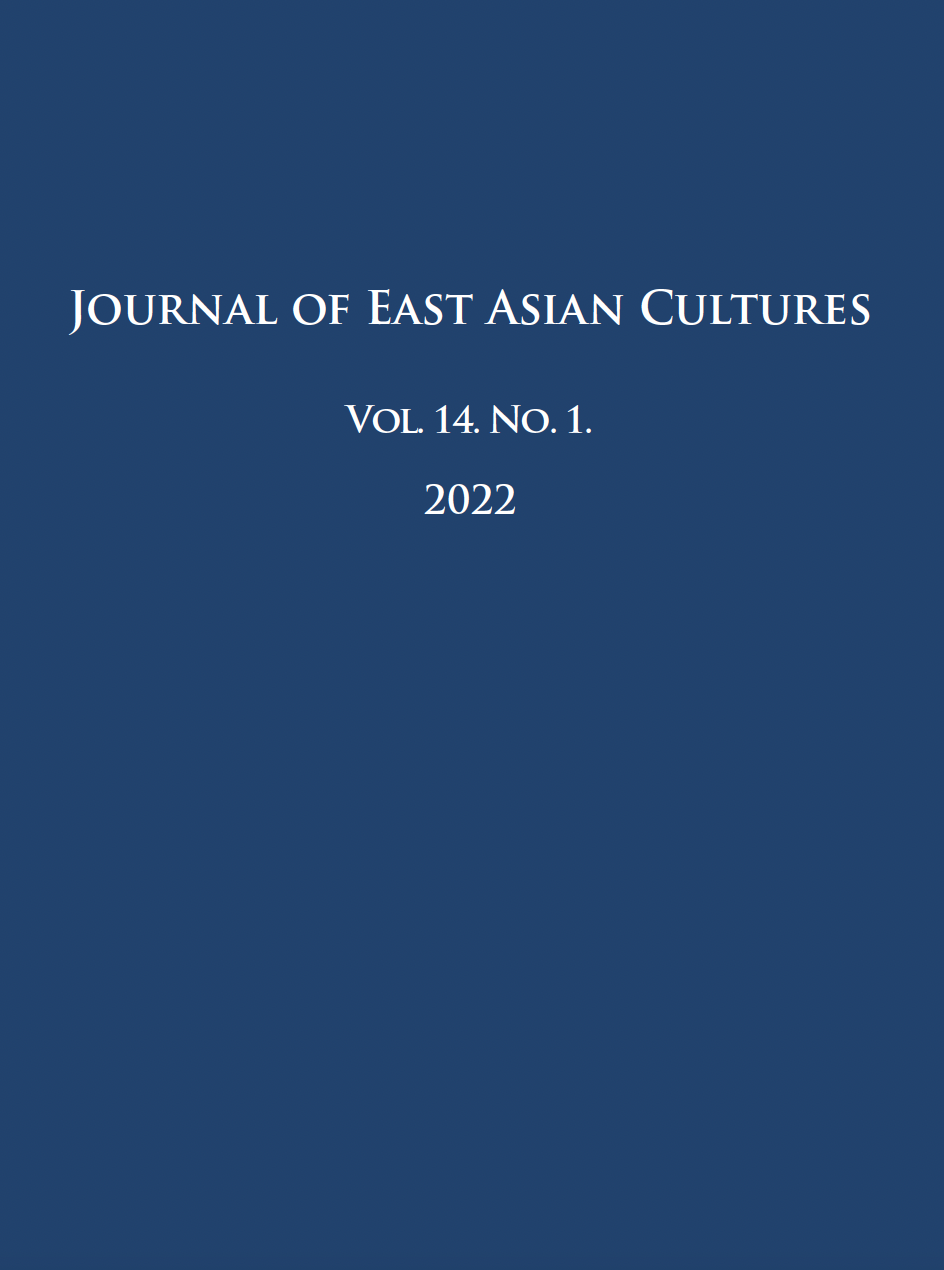Published 2022-11-22
Keywords
- Auguste Rodin,
- Hanako,
- kabuki,
- Japanese theatre,
- death scene
- Loïe Fuller,
- Colonial Exhibition,
- mie,
- nirami ...More
How to Cite
Copyright (c) 2022 Petra Doma

This work is licensed under a Creative Commons Attribution-NonCommercial 4.0 International License.
Abstract
Hanako (Ōta Hisa, 1868–1945) was an insignificant member of a small Japanese theatrical troupe when she was discovered by the well-known dancer, Loïe Fuller, who after seeing Hanako’s death scene, decided to become her impresario. Thereafter, Fuller organised each of Hanako’s European tours and wrote for her many Japanese-style dramas that always ended with the cruel but utterly expressive death of the protagonist. Hanako met Auguste Rodin, the famous sculpture, at the Marseille Colonial Exhibition in 1906. The master was fascinated by Hanako’s performance and tried to sculpt the ‘death face’ that she expressed during her death scenes. This face, with a weird expression, was most probably a nirami, which is a type of mie pose in kabuki theatre. Rodin created numerous busts and faces from different materials trying to capture the emblematic moment when Hanako saw death. The present paper examines the short but interesting period of Hanako’s Western career, focusing on her meeting with Rodin. I use their story as a unique and symbolic illustration of Japanese artists’ efforts to transform themselves and their art to ‘match’ the Western eye and of the ways in which the West was looking for verification of its preconceptions of the ‘strange’ and ‘exotic’ East in the early 1900s.
References
- Bourdon, Georges 1906. “Rodin et les petites princesses jaunes”. Le Figaro, 01 august 1906, 2.
- Brandon, James R. 1988. “On Little Hanako”. Asian Theatre Journal 5.1: 92–100. https://doi.org/10.2307/1124027
- Conti, Meredith 2018. Playing Sick: Performances of Illness in the Age of Victorian Medicine. New York: Routledge. https://doi.org/10.4324/9781315203331
- Doma Petra 2020. “Sadayakko és Hanako Budapesten” [Sadayakko and Hanako in Budapest]. Távol-keleti Tanulmányok 11.1: 79–112. https://doi.org/10.38144/TKT.2019.1.5
- Doma Petra 2022. Az idegen vonzásában. Sadayakko, Matsui Sumako és Hanako: színésznők az inrekulturális színház kontextusában [Attracted by the Strange. Sadayakko, Matsui Sumako and Hanako: Actresses in the Context of Intercultural Theatre]. Pécs: Kronosz.
- Downer, Lesley 2003. Madame Sadayakko. Polmont: Review.
- Elsen, Albert E. – Jamison, Rosalyn Frankel 2003. Rodin’s Art – The Rodin Collection of the Iris & B. Gerald Cantor Center for Visual Arts at Stanford University. Oxford: Oxford University Press.
- Fuller, Loïe 1913. Fifteen years of a dancer's life, with some account of her distinguished friends. London: H. Jenkins.
- Kabuki 21. http://www.kabuki21.com/glossaire_5.php (last accessed: 09.05.2022.)
- Kano, Ayako 2001. Acting Like a Woman in Modern Japan. New York: Palgrave. https://doi.org/10.1007/978-1-349-63315-9
- Keene, Donald 1972. Landscape and Portraits – Appreciations of Japanese Culture. London: Secker&Warburg.
- Keen, Donald 1996. The Blue-eyed Tarōkaja. New York: Columbia University Press.
- Laurent, Monique 2005. Rodin. Budapest: Aquila.
- Mori Ōgai 森鴎外 1917. “Hanako” 花子. In: Mori Ōgai Kankonroku 還魂録 [A Record of returning souls]. Tōkyō: Shunyōdō, 13–17.
- “Rodin and the Cambodian dancers” http://www.musee-rodin.fr/en/exposition/exposition/rodin-and-cambodian-dancers (last accessed: 07.01.2017.)
- Savarese, Nicola 1988. “A Portrait of Hanako”. Asian Theatre Journal. 5.1: 63–75. [Fowler, Richard] https://doi.org/10.2307/1124024
- Sawada Suketarō 澤田助太郎 1983. Petite Hanako ポチとアナ子 [Little Hanako]. Tōkyō: Chūnichi shubbansha.
- Sawada Suketarō 澤田助太郎 1996. Rodan to Hanako ロダンと花子 [Rodin and Hanako]. Tōkyō: Chūnichi shubbansha. https://doi.org/10.11619/africa1964.1996.49_99
- Scholz-Cionca, Stanca 2016. “Japanesque Shows for Western Markets: Loïe Fuller and Japanese Theatre Tours Through Europe (1900-08)”. Journal of Global Theatre History 1.1: 46–61. https://gthj.ub.uni-muenchen.de/gthj/article/download/5013/4311/ (last accessed: 07.07.2020.)
- Scott, Adolphe Clarence 1999. The Kabuki Theatre of Japan. New York: Dover Publications.
- Sukenobu Isao 資延勲 2001. Maruseyu no Rodan to Hanako マルセイユのロダンと花 [Rodin and Hanako in Marseille]. Tōkyō: Bungeisha.

